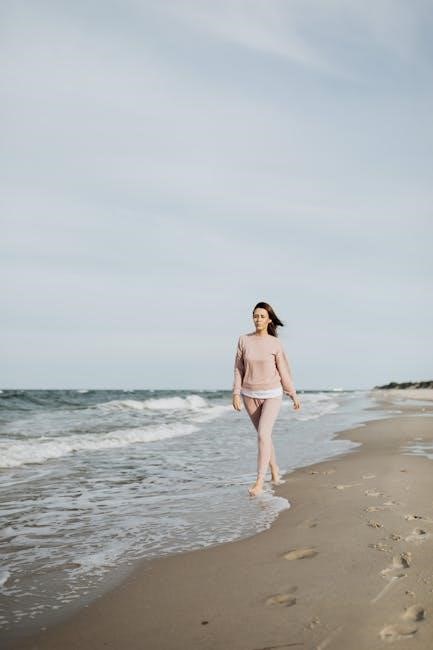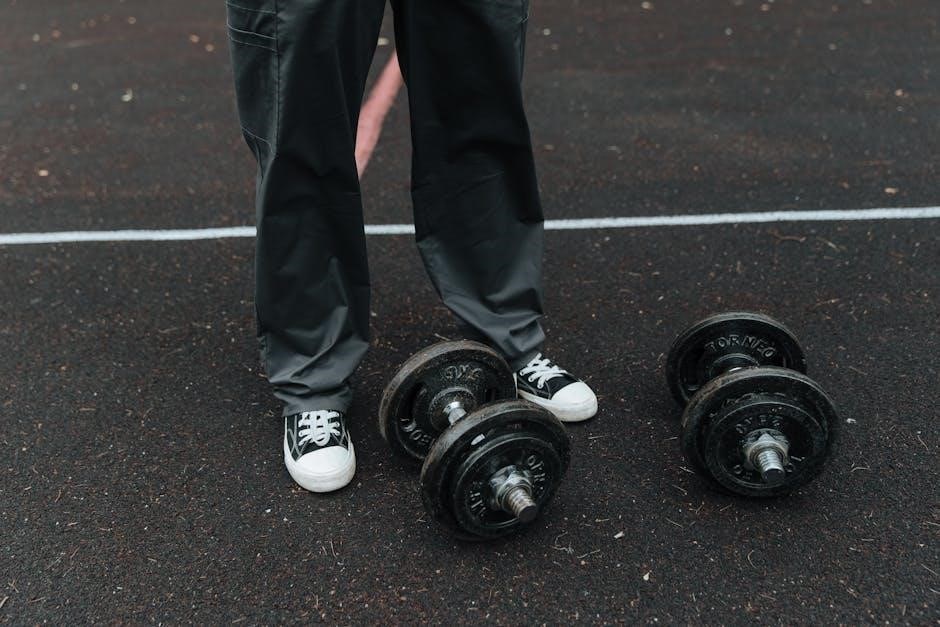
Discover the importance of a perfect fit with our comprehensive guide. Learn how to choose pants that flatter your body type, ensuring comfort and style for every occasion.
Why Pants Fit Matters
A well-fitting pair of pants boosts confidence, enhances comfort, and elevates your personal style. Proper fit ensures freedom of movement while creating a polished, put-together look. It’s not just about aesthetics—ill-fitting pants can cause discomfort and restrict mobility, making the right fit essential for everyday wear.
Understanding how pants should fit empowers you to make informed choices, ensuring your wardrobe supports both functionality and self-expression. A good fit is the foundation of a great outfit, making it a crucial aspect of personal style and daily comfort.
Key Elements of a Perfect Fit
A perfect fit combines comfort and style, starting with a waist that sits naturally without gaping or digging in. The seat and crotch should provide a smooth, comfortable shape, while the legs should taper or relax proportionally to your body. Proper length ensures hems fall just right, avoiding drag or exposed ankles. These elements work together to create a balanced, flattering silhouette that moves with you effortlessly.

Understanding Pants Measurements
Understanding pants measurements is crucial for the perfect fit. Key areas include waist, inseam, and seat. Accurate measurements ensure comfort and style.
Waist and Rise
The waist measurement determines where pants sit on your body. A well-fitted waistband should lie flat without gaping or digging in. The rise refers to the distance from the crotch to the waistband, influencing comfort and style. A low rise offers a trendy look, while a high rise provides a more classic, comfortable fit. Proper waist and rise alignment ensures both aesthetics and functionality in your pants.
Seat and Crotch
The seat and crotch area is crucial for comfort and mobility. A well-fitted seat should not be too tight or too loose, avoiding unsightly wrinkles or restrictions. The crotch depth, measured from the front to the back, should provide a natural fit without bunching. Properly proportioned seat and crotch ensures ease of movement and prevents discomfort, making it essential for both casual and formal pants.
Leg Width and Length
Leg width and length are key to achieving a balanced look. Slim legs streamline the silhouette, while wider legs offer a relaxed fit. The length should align with your shoe style, avoiding excessive break or stacking. Properly proportioned legs ensure comfort and style, whether for formal or casual wear. Measuring inseam and outseam helps determine ideal length, ensuring pants fall perfectly on the shoe, creating a polished appearance.
Determining Your Fit Style
Identify your ideal fit by considering your body type, lifestyle, and personal preferences. Explore slim, relaxed, or tailored options to find what suits you best.
Slim-Fit vs. Relaxed Fit
Slim-fit pants offer a tailored, modern look with a narrower cut through the thigh and leg, ideal for formal or stylish occasions. Relaxed-fit pants provide a looser, more comfortable silhouette, suitable for casual wear. Slim-fit styles accentuate body lines, while relaxed fits prioritize ease and movement. Consider your lifestyle, body type, and personal comfort when choosing between these options to ensure the best fit for your needs and preferences.
Understanding Fabric Weight and Stretch
Fabric weight and stretch significantly impact pants comfort and functionality. Lighter fabrics, like linen or cotton, are ideal for warm weather, while heavier materials, such as wool, suit colder climates. Stretch fabrics, like elastane blends, offer flexibility and mobility, perfect for active lifestyles. Non-stretch fabrics, such as rigid denim, provide structure but less give. Choose fabrics based on your activity level and desired comfort to ensure the best fit and performance for your needs.
Common Pants Fit Issues
Issues like gapping waistbands, tight thighs, baggy knees, and restrictive hems are frequent problems. Addressing these ensures a balanced, comfortable, and flattering fit for any body type.
Gapping Waistbands and Tight Thighs
Gapping waistbands occur when pants are too large or the rise is incorrect, while tight thighs result from restrictive fabric or a slim cut. To fix these issues, ensure the waistband sits comfortably without excess material, and opt for fabrics with stretch or a slightly looser fit through the thighs. Proper sizing and tailoring can resolve these common problems, enhancing both comfort and appearance.
Baggy Knees and Restrictive Hems
Baggy knees occur when pants are too loose or overly structured, creating an unflattering silhouette. Restrictive hems can limit movement and cause discomfort. To address these issues, opt for pants with a streamlined design or adjust the fit through tailoring. Ensure hems allow for a full range of motion, and consider fabrics with stretch for added flexibility. Proper alterations can enhance both aesthetics and functionality, ensuring a polished yet comfortable look.
How to Measure Yourself
Use a flexible tape measure to determine your waist, hips, and inseam. Stand upright and relaxed to ensure accurate measurements for the best pants fit.
Using a Flexible Tape Measure
A flexible tape measure is essential for accurate pants measurements. Wrap it around your natural waistline, ensuring it’s level and not too tight or loose. For hips, measure 7-9 inches below your waist. To find your inseam, measure from the crotch seam to the bottom of your ankle. Stand upright and relaxed during measurements to ensure the best fit. This process helps determine your ideal pant size and style.
Measuring for the Perfect Waist-to-Length Ratio
Ensuring the right balance between your waist and pant length is key for a polished look. Measure your natural waist, then your hips 7-9 inches below. For length, measure from the crotch to your desired hem. A balanced ratio prevents pants from appearing too short or long. This measurement helps tailor styles to your body, ensuring a flattering and proportional fit that complements your frame perfectly.

Choosing the Right Fabric for Your Lifestyle
Select fabrics that align with your daily activities. Cotton and denim suit casual wear, while wool or khaki is ideal for formal settings. Active lifestyles benefit from moisture-wicking materials.
Casual vs. Formal Fabrics
Casual fabrics, like cotton and denim, are perfect for everyday wear, offering comfort and a relaxed look. Formal fabrics, such as wool or khaki, are ideal for professional settings, providing a polished appearance. Choose cotton for softness and breathability, while wool ensures durability and a refined feel. Selecting the right fabric ensures your pants meet your lifestyle needs, whether for leisure or business.
Moisture-Wicking Fabrics for Active Lifestyles
Moisture-wicking fabrics are ideal for active lifestyles, keeping you cool and dry during workouts or outdoor activities. These high-performance materials, often made from polyester or nylon blends, draw sweat away from the skin and evaporate it quickly. Perfect for running, yoga, or hiking, they ensure comfort and prevent chafing. Opt for breathable, lightweight options that maintain flexibility and support, allowing you to stay focused on your activities without discomfort.
Altering Pants for a Custom Fit
Altering pants ensures a tailored look and comfort. Hemming, adjusting waistbands, or taking in seams can transform ill-fitting pants into a custom fit, enhancing both style and functionality.
Hemming and Shortening Pants
Hemming and shortening pants are common alterations to achieve the perfect length. By folding raw edges and sewing to desired hemlines, you can customize fit and style. Proper hemming maintains fabric integrity, preventing fraying. Shortening pants ensures they sit neatly above shoes or match seasonal trends, improving overall aesthetics and functionality. This simple adjustment can make a significant difference in how your pants look and feel, ensuring a polished appearance for any occasion. Always use a flexible tape measure for accurate adjustments to ensure a seamless fit.
Taking In or Letting Out Seams
Adjusting seams is a key step in achieving a perfect fit. Taking in seams can slim the silhouette, while letting them out provides more room. This ensures comfort and eliminates unflattering gaps or tight spots. Use a flexible tape measure to identify areas needing adjustment. Proper alterations involve carefully unpicking and resewing seams, maintaining fabric structure. This allows pants to drape naturally, enhancing both comfort and style for a tailored look. Always consider fabric weight and stretch before making adjustments to ensure optimal results.

Caring for Your Pants
Proper care extends the life of your pants. Wash and dry according to fabric type, use gentle cycles, and avoid over-drying. Fold or hang neatly to maintain shape.
Washing and Drying Tips
Always check the care label for specific instructions. Wash pants inside out to protect fabric. Use cold water to prevent shrinkage and fading. Avoid bleach or harsh chemicals. For drying, air-dry or tumble on low heat. Remove promptly to prevent wrinkles. Fold or hang to maintain shape. Steer clear of over-drying to keep fabric soft and intact. Proper care ensures your pants stay looking their best for years to come.
Folding and Storage Techniques
Proper folding and storage are key to maintaining your pants’ shape and quality. Use the KonMari fold to save space and reduce wrinkles. Store pants in a cool, dry place to prevent moisture damage. Consider using fabric dividers or bins to organize your closet. For seasonal storage, use breathable containers to preserve fabric integrity. Always fold or hang pants after washing to avoid creases and extend their lifespan.

Building a Wardrobe with Well-Fitting Pants
Start by identifying essential styles that align with your lifestyle and personal style. Invest in versatile, high-quality pants that mix-and-match effortlessly, creating a cohesive wardrobe foundation.
Essential Styles Every Wardrobe Needs
A well-rounded wardrobe should include versatile styles like straight-leg trousers, slim-fit jeans, and tailored chinos. These timeless pieces can be dressed up or down, offering flexibility for various occasions. Dark wash jeans are a classic choice for casual looks, while khaki or navy chinos provide a polished alternative. Incorporating these essentials ensures a solid foundation, allowing you to mix-and-match with ease and adapt to different lifestyles or events seamlessly.
Accessorizing to Complete the Look
Accessorizing elevates your pants style, adding personality and polish. A quality belt can define your waist, while sleek shoes enhance the overall silhouette. Adding a statement bag or minimalist watch complements the outfit. Layering with a jacket or blazer creates a cohesive look. Thoughtful accessories balance functionality and fashion, ensuring your pants are the foundation of a standout ensemble tailored to your personal aesthetic and lifestyle needs.
Finding the perfect pants fit is transformative. This guide has covered essential measurements, styles, and care tips. Use these insights to build a confident, polished wardrobe effortlessly.
Final Tips for Achieving the Perfect Fit
Invest in quality measurements and fabrics. Pay attention to rise, seat, and leg width for comfort. Consider alterations for a tailored look. Store pants neatly to maintain shape. Experiment with styles to find what suits you best. Confidence comes from a well-fitted wardrobe, so take the time to get it right.